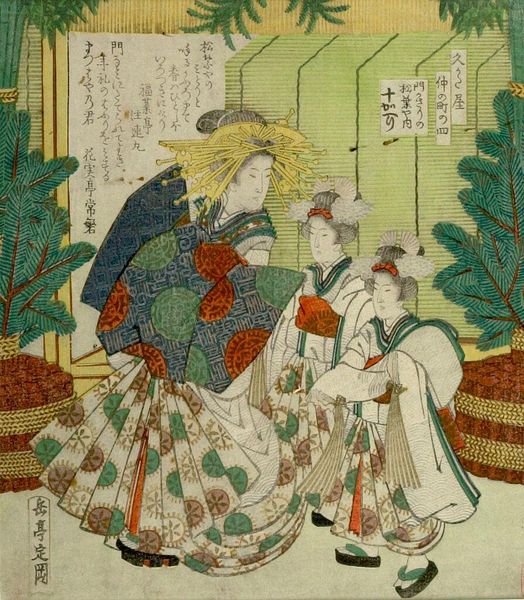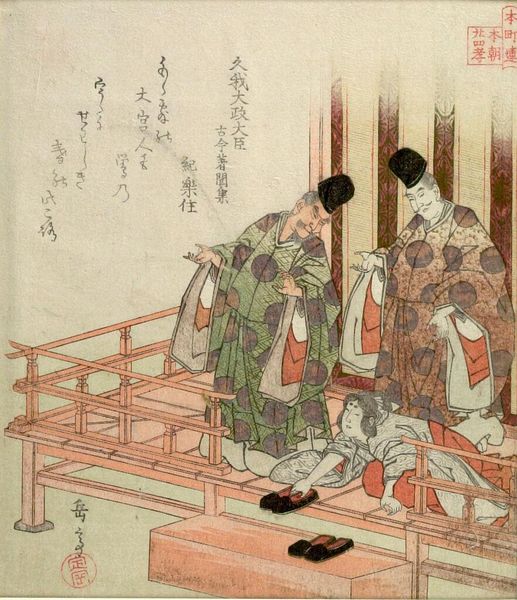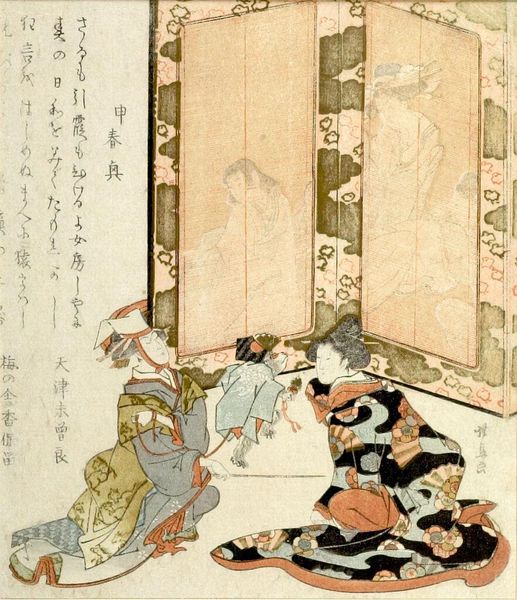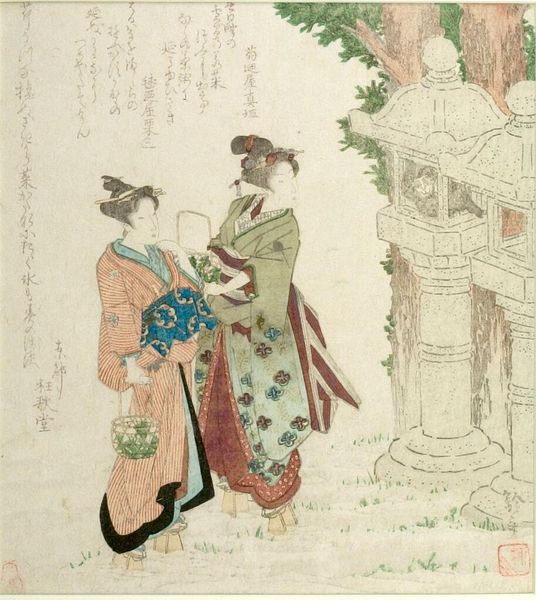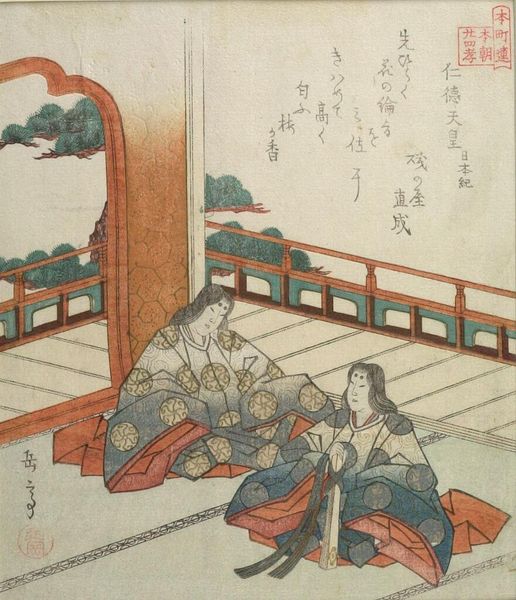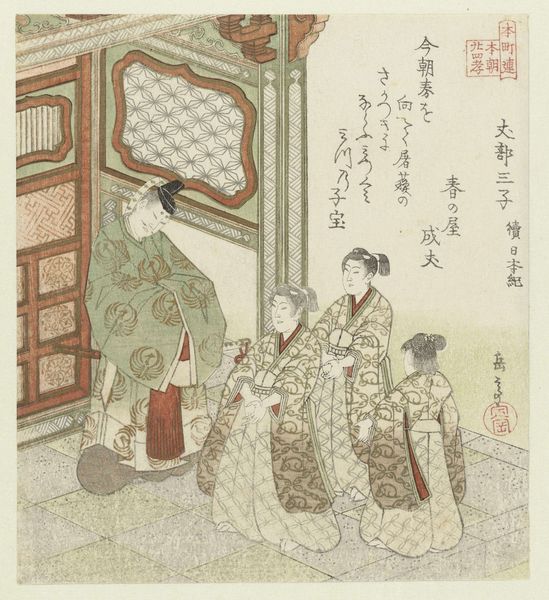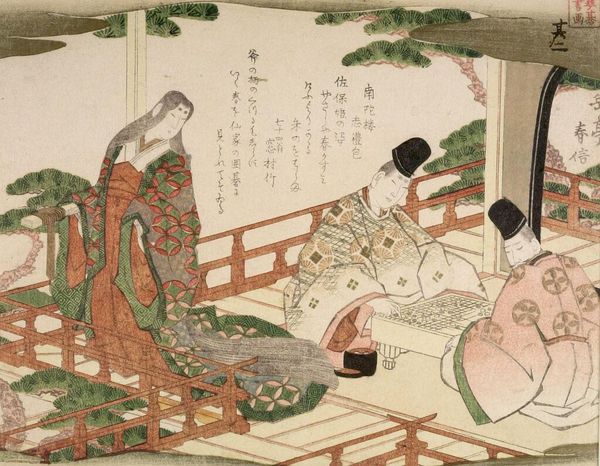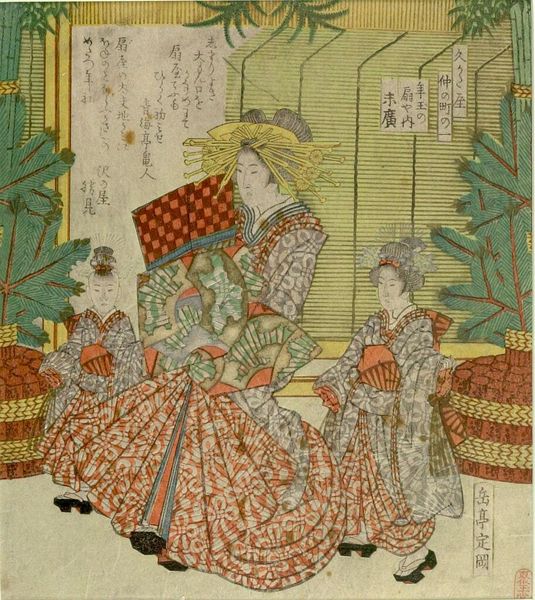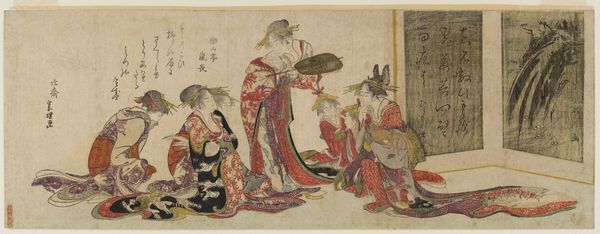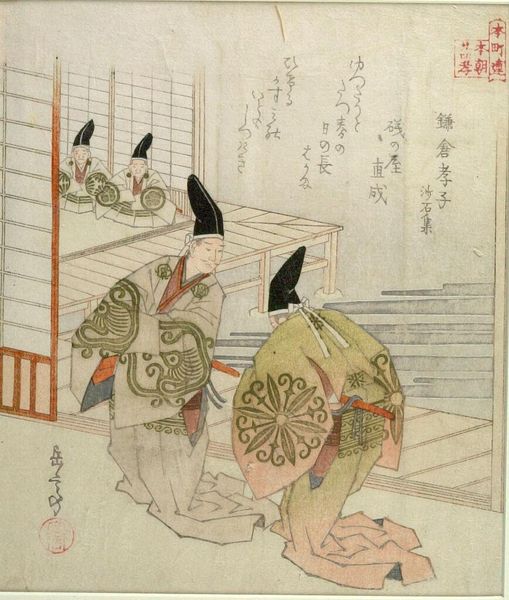
Hasebe sanshi (Shoku Nihongi), from the series Twenty-Four Japanese Paragons of Filial Piety for the HonchÅ Circle (HonchÅren honchÅ nijÅ«shikÅ), with poem by Harunoya Naritake c. 1821 - 1822
0:00
0:00
Dimensions: Paper: H. 20.8 cm x W. 18.2 cm (8 3/16 x 7 3/16 in.)
Copyright: CC0 1.0
Curator: This print by Yashima Gakutei, likely created for a poetry circle, is titled "Hasebe sanshi (Shoku Nihongi), from the series Twenty-Four Japanese Paragons of Filial Piety for the Honchō Circle." Editor: There's such stillness in this small image, like a captured moment in a very formal, structured world. I notice the almost geometrical repetition, like the patterned floor tiles and the robes of the figures. Curator: Indeed, Gakutei was known for his meticulous attention to detail. The print depicts a scene of filial piety, a key concept in Confucian ethics. The poem by Harunoya Naritake adds to the layered meanings of the artwork. Editor: Looking at these figures, particularly the women, I'm curious about the societal expectations placed upon them. Were they valued solely for their roles in maintaining familial order? Curator: That's a valid question. Prints like these functioned as both moral instruction and idealizations of social roles, reinforcing certain power structures. Editor: It makes you consider how art can perpetuate, but also potentially subvert, the norms of its time. Curator: Precisely. I'm struck again by the level of detail given the print's dimensions. Editor: I am too. This piece offers a space to contemplate our understanding of obligation and family, then and now.
Comments
No comments
Be the first to comment and join the conversation on the ultimate creative platform.
